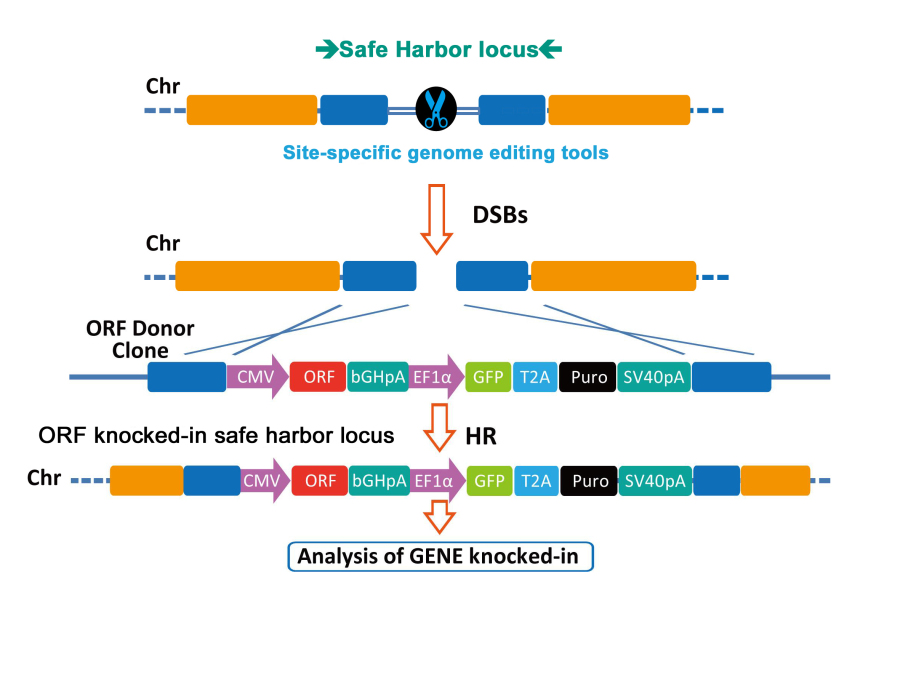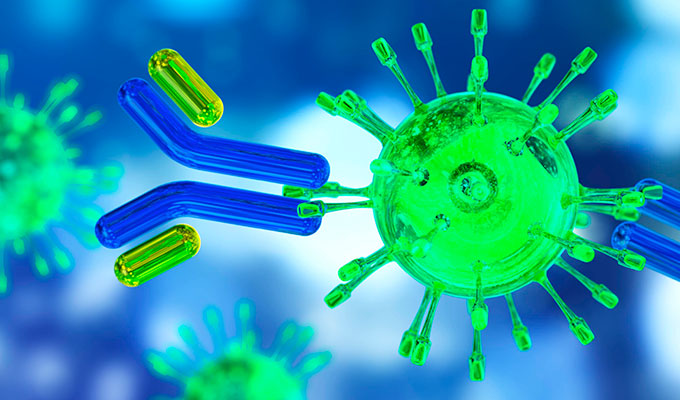Stable expression in a cell lines is very useful for numerous projects. For example, it helps in Eukaryotes for optimization of protein productions and it is convenient for recurrent needs and high yields. Stable exogenous expression of tagged protein allows extensive tracking and localisation of the protein in live. Cell lines stably expressing a protein can be used for various screenings such as lost of function assays (CAS9-expressing cells), and reporter-based assays (Gaussian luciferase). Of course, the stable expression could also be shRNA for knock-down.
Stable expression implies insertion into the genome. It used to be random and could cause hits with side effects. Now, targeted insertion in Safe-Harbor sites is now possible. How can you take advantage of this progress?
Mouse ROSA26 and Human AAVS1 safe harbor sites
First of all, what is a safe-harbor site? It is an ideal site in the genome in which we can add a construct without harm and expect consistent level expression. For years, researchers have looked for it. In 1997, Zambrowicz et al initiated the discovery of the ROSA26 site on Mouse chromosome 6. It was shown it is a transcriptionally active region with an open chromatin configuration and transgene insertion has no or minimal effect on global and local gene expression. Remarkably, a ROSA26 inserted transgene is expressed in all tissues.
Similarly, in the human genome there is a safe-harbor site on chromosome 19 (locus PPP1R12C) called AAVS1. It was described more recently by DeKelver, et al. (2010). It has become a remarkable safe harbor site for ESC (Embryonic Stem Cells) and iPSC (induced Pluripotent Stem Cells) because of the robust expression of harboring constructs and the absence of abnormalities or differentiation deficits.
Since absence of visible effect doesn’t mean there is no at all risk of effect, I should mention that an ideal genomic safe-harbor doesn’t exist yet. Nevertheless, AAVS1 in human and ROSA26 are certainly the safer harbor sites today.
Comprehensive Safe-Harbor kit
Today we can easily insert a construction into a targeted site of the genome and so maintain its integrity. The principle is based on the targeted insertion of a Donor construction as illustrated in figure 1.
This knock-in can be performed through CRISPR-CAS9. There are dedicated tool boxes to target the Mouse ROSA26 and the Human AAVS1 safe-harbor sites.
Each kit includes vectors expressing the system (CRISPR-CAS9) and the following:
- Donor vector in which you clone your ORF of interest
- RFP Donor control to monitor in fluorescence the knock-in
- Primer pairs for the PCR analysis of the genome integration
You can also obtain the Donor vector with your ORF of interest upon request.
The RFP control is highly convenient allowing a direct monitoring of the transgene genome integration (Figure 2).

Comparing with the control (without Donor), we can see the high integration efficiency after only 12 days of puromycin selection.
Comparing CRISPR-CAS9 Safe-Harbor to the classic method
Well… Think easier, faster, more reliable and cleaner!

So, is it a new way to work? As soon as you get the Safe-Harbor kit (with the empty Donor vector), you can use it indefinitely to establish promptly isogenic and polyclonal cell lines expressing all the ORFs you need. And furthermore the cell lines will be more reliable than random integration of lentivirus or plasmid.
Any questions? Please feel free to get in contact by leaving your comments below!



